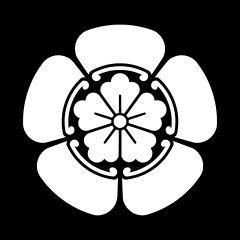Although one day Oda Nobunaga would conquer central Japan and find himself a hair’s breadth away from being named Shōgun, his early life was anything but auspicious. Shunned by his father’s more influential advisors for being rude and acting like a spoiled brat, the only thing that really set him apart during his youth was a love of matchlock firearms. This was, of course, a few years before being a gun nut might provide political capital.

Nobunaga’s use of firearms would later revolutinize Japanese warfare, but in his youth he was doing the Feudal equivalent of shooting beer cans off of his fence. Source: https://commons.m.wikimedia.org/wiki/File:EdoJapaneseArquebuse.jpg
When Oda Nobuhide died suddenly, Nobunaga made a huge, emotional scene at his funeral. He screamed and shouted, threw incense at the alter. Grief takes many forms, but such an open and undignified display of emotion was offensive to the other Samurai. Hirata Masahide, Nobunaga’s mentor and longtime retainer of the clan, committed Seppuku out of shame, an act which haunted Nobunaga for the rest of his life. Some of the bolder retainers and vassals began to openly support the younger son, Nobuyuki, as claimant. Fortunately, everyone decided to meet together and talk things out peacefully before – JUST KIDDING, THEY WENT TO WAR!
The war for control of Owari Province quickly became a family affair, with one of Nobunaga’s uncles (Nobutomo) siding with his brother. Nobutomo wisely tried to gain the support of Owari’s Shogunal Deputy, Shiba Yoshimune. The deputy, or shugo, was actually playing both sides of the fence and Nobutomo murdered him when he found his secret correspondences with Nobunaga. With the help of his uncle Nobumitsu, Nobunaga siezed Kiyosu Castle and killed Nobutomo. While Nobuyuki was still in the wind, Nobunaga was the de-facto ruler of Owari, having the son of the late shugo (who would inherit the title) safe in his possession. This presented an opportunity to give Owari some relief from the constant raids by the neighboring Imagawa Clan, which Nobunaga did by forcing an alliance through the influence of Shiba Yoshikane, whose shogunal authority extended to the Imagawa’s home province of Mikawa.

First rule of being a Daimyo in Feudal Japan; play nice with your neighbors. Failing that, find a way to force them to play nice with you. Source: https://commons.m.wikimedia.org/wiki/File:Map_of_Feudal_Japan_by_Stuart_Rankin.jpg
Oda Nobunaga still had a rebellious younger brother in hiding, but he wasn’t about to let that stop him from playing Feudal Japan’s very own game of thrones. When the neighboring province Mino erupted with its very own succession dispute between father and son of the ruling Saitō Clan. Nobunaga sided with the father, Dōsan, and rode into Mino with his very own army. Unfortunately, Dōsan was killed in battle, and his son Yoshitatsu succeeded him. Nobunaga’s early kingmaking had resulted only in making a new enemy rather than an indebted ally. This would have been simply unfortunate if not for his younger brother openly declaring rebellion and gathering many of their father’s most able retainers to his cause, particularly Shibata Katsuie and Hayashi Hidesada.
At the Battle of Inō, Nobunaga’s army clashed with that of his brother Nobuyuki’s, resulting in a sound victory for Nobunaga. Having captured his brother and the two troublesome retainers who had endorsed his cause, Nobunaga’ instinct was to have them killed. They were spared only when Tsuchida Gozen, the mother of Nobunaga and Nobuyuki, pleaded on their behalf for mercy. Within the space of a few months, Nobuyuki was again plotting rebellion, but this time Shibata Katsuie warned Nobunaga. Supposedly, Nobunaga faked an illness so that Nobuyuki would visit him and then murdered him.

Having successfully Corleoned his way into power, Nobunaga was sitting relatively pretty, having secured his eastern border from the incessant raiding of the Imagawa and unified all of Owari under his command. His misstep in Mino had given him an enemy, but there was no indication that the Saitō were ready to exact revenge just yet. Everything was finally as it should be. There was just one problem; the shugo whom he kept under his thumb had been writing letters to the Imagawa and Kira Clans trying to scheme his way out of hostage status and rebuild the Shiba clan so that he could actually be in charge.
Like a 60’s TV Batman, Nobunaga reached for his anti-shugo spray. Unfortunately for Shiba Yoshikane, that anti-shugo spray was not an aerosol can so much as imminent death. This was Nobunaga’s solution to many a problem; kill it. While killing Yoshikane allowed the Oda Clan to rule Owari outright and without pretense it also nullified the alliance they had forced the Imagawa into. And unlike so many other Feudal powers of the day, the Imagawa had no succession dispute to distract them, no provincial strife or enemies at their back to deploy soldiers against. Their only problem was Oda Nobunaga, a petty warlord acting without the support of Kyoto whose own army had been depleted from the succession wars and the war in Mino. Most estimates put the Oda Clan’s troop count around 3,000.
The Imagawa Army numbered 40,000. And they were coming for Nobunaga.
(to be continued…)

